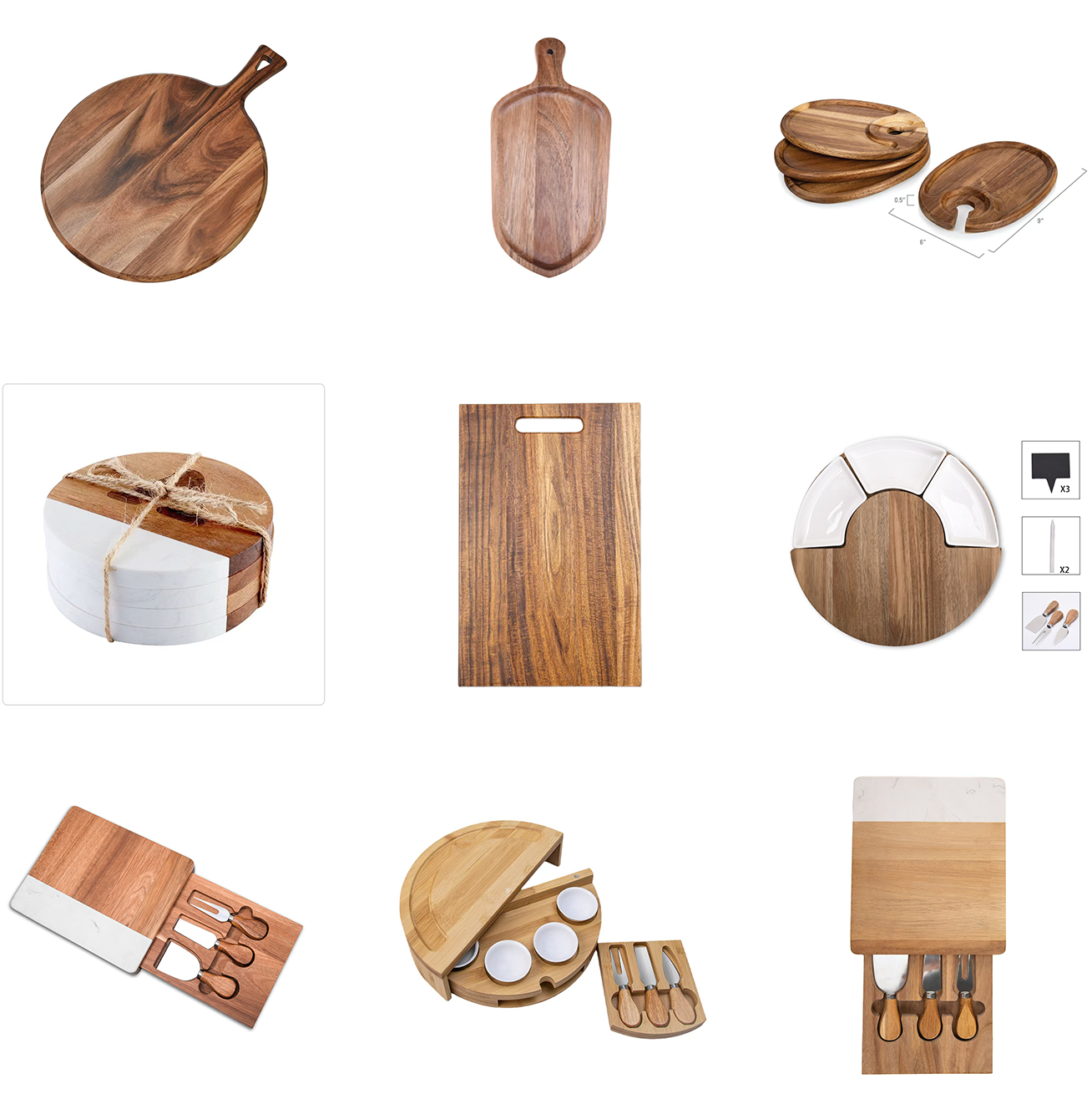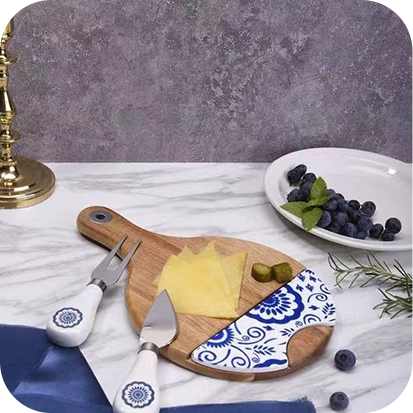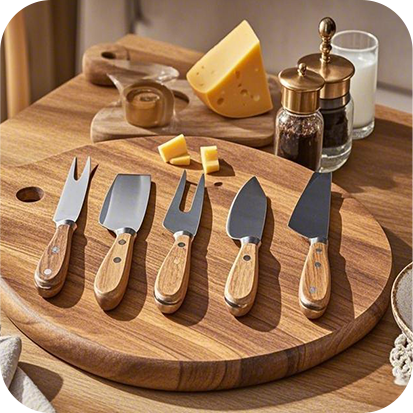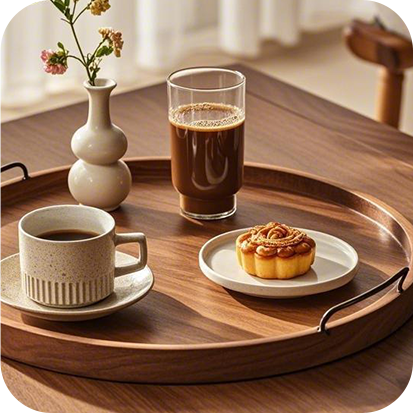Is Acacia Wood Cutting Board Good for Knives?
Is Acacia Wood Cutting Board Good for Knives?
When choosing the perfect cutting board, many home cooks and professional chefs face the same question: Will this board protect or dull my knives? Among the myriad of options—plastic, bamboo, maple—Acacia wood has emerged as a favorite. But is Acacia truly a knife-friendly material?
This article explores Acacia wood’s interaction with kitchen knives, weighing its pros and cons, and explaining why it’s become a preferred choice for manufacturers and consumers seeking long-lasting kitchen performance.
1. Understanding Knife Wear and Cutting Surfaces
Knife performance depends not just on blade quality but also on what you cut on. Overly soft surfaces may harbor bacteria and warp, while overly hard materials can chip or dull blades faster.
A good cutting board should:
Be hard enough to resist cuts and grooves
Be soft enough not to chip or dull the blade
Maintain a clean, smooth surface over time
2. Acacia Wood: The Balanced Hardwood
Acacia wood hits the sweet spot between strength and flexibility. With a Janka hardness rating between 1700–2200, it’s significantly harder than bamboo yet softer than glass or marble. This makes it:
Resistant to deep cuts or scoring
Less likely to dull a knife edge compared to stone or ceramic
Highly durable under daily kitchen use
In practical terms, using Acacia reduces the frequency of sharpening and extends the life of your knives—making it a cost-effective and performance-friendly material.
3. Surface Texture and Blade Control
Acacia’s tight, closed-grain surface provides excellent knife control. Whether slicing vegetables or carving meat, the blade remains stable and precise.
✅ Benefits:
Minimizes slipping and accidental injuries
Reduces edge blunting over time
Allows smooth push and pull cutting actions
Cutting boards like the Leak-proof food safe custom print Acacia wood Cheese platter board offer both function and aesthetics with smooth textures suitable for delicate blades.
4. Resistance to Knife Marks and Staining
Unlike softer woods (e.g., pine), Acacia doesn’t develop deep knife grooves quickly. This ensures a clean working surface and reduces bacterial accumulation.
Additionally, it is:
Naturally water-resistant
Less prone to stains and odors
Easy to maintain with mineral oil treatments
This is especially useful in multi-purpose designs such as the Leak-proof food safe adjustable Acacia wood Serving board, which transitions from prep to serving.
5. Knife Types: How They Interact with Acacia
Acacia wood performs exceptionally well with:
Chef’s knives and Santoku blades for general chopping
Paring knives for fine dicing
Bread knives due to its dense texture
However, cleavers and extremely hard steels may leave temporary impressions—common across all wood types.
Premium options like the Food contact safe on-demand production Acacia wood BBQ chopping board are engineered to endure heavy-duty kitchen action while minimizing knife impact.
6. Environmental & Safety Considerations
Acacia is not just good for your knives—it’s good for the environment too. It grows quickly, requires minimal irrigation, and supports sustainable sourcing. It also supports:
Food safety standards
Non-toxic finishes
Anti-bacterial grain structure
For instance, boards like the Bio-safe adjustable Acacia wood Acacia serving tray offer chemical-free preparation surfaces with elegant presentation.
The Non-leaching material flexible design Acacia wood BBQ chopping board highlights how innovation and material science converge for safer culinary experiences.
If you're looking for a cutting board that protects your knives, elevates your kitchen's aesthetic, and respects sustainability—Acacia wood is one of the best choices available. It balances hardness and resilience, making it a knife-safe, user-friendly, and eco-conscious solution for modern kitchens.
👉 Explore custom Acacia wood cutting solutions tailored for your brand or home.
📧 Contact us: info@justwoodencuttingboard.com
📱 WhatsApp: +86 183 1248 3616
🏷️ Manufacturer: YangJiang Stellar Kitchenware
READ MORE:


Yangjiang Cuthaven Kitchenware Co.,Ltd
Yangjiang Cuthaven Kitchenware Co.,Ltd.
specializes in the production and export of high-quality metal and wooden kitchenware. With over 16 years of experience in the industry, we have established ourselves as a trusted partner for businesses worldwide.


















